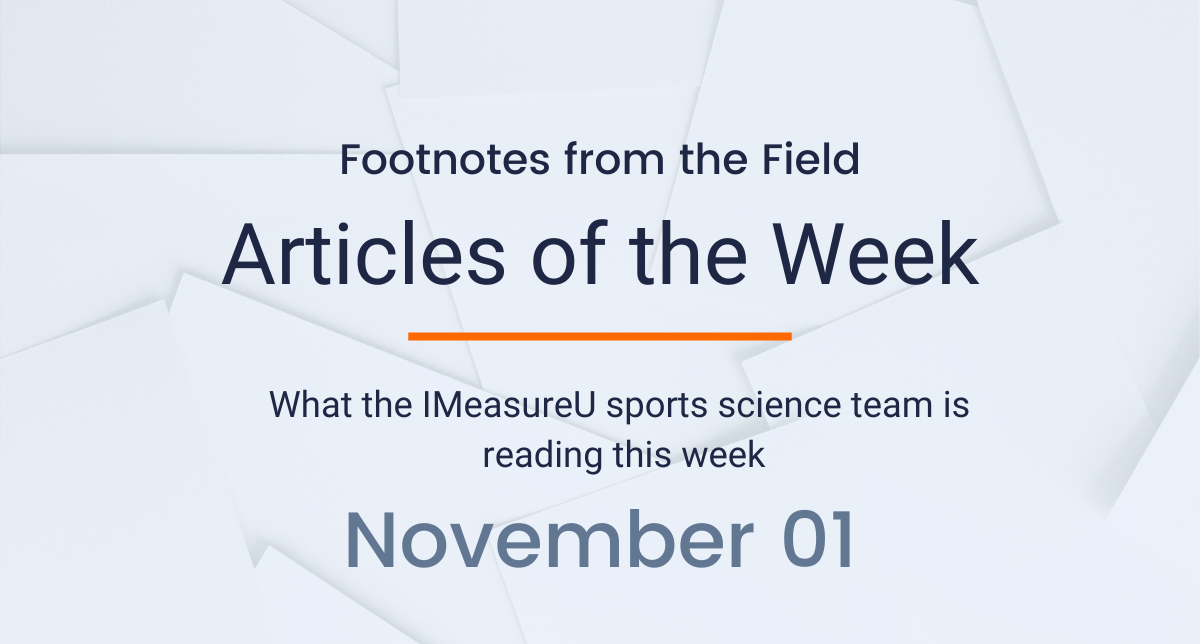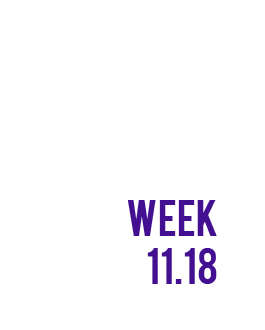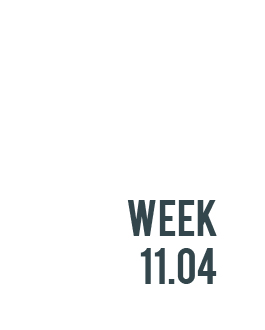
Here’s what the sports science team at IMeasureU is reading this week:
Andrew Flatt is an expert when it comes to heart rate variability (HRV). There is growing research in the area of using HRV to guide resistance training which may potentially reduce the risk of injury while producing comparible adaptations to standardized training. There are many practical limitations to using HRV, especially in a team sport setting, one of them being the challenge of getting athletes in a supine position to take the measurement. Therefore, the aim of this article was to quantify associations between changes in HRV, perceptual and neuromuscular performance metrics up to 48 h
post-RT and to determine which HRV measurement position (e.g., supine or standing) provides stronger associations with recovery markers.
Measuring and monitoring the mechanical loads experienced by musculoskeletal tissue is critical to reducing risk of injury as well as prescribing appropriate training strategies to recover from injury. This whitepaper from IMeasureU Chief Scientific Officer, Thor Besier provides an overview of the literature that underpins our current understanding of injury mechanisms and the background concepts and rationale for IMU Step and
Bone Stimulus as well as providing a review of bone mechanobiology (how bone responds differently to a mechanical stimulus).
The next article comes from Richard Brindle and colleagues ay High Point University in the Sports Medicine journal. The aim of this systematic review and meta-analysis was to identify the association between overuse injury and temporal spatial parameters during running. Based on pooled results from multiple studies, stride time, contact time, cadence, and stride length averages are not distinguishable between runners either with or without a history of overuse injury. This led the authors to suggest that more studies are required to determine the association of temporal spatial parameters with overuse injury development in runners.
Our fourth article comes from Philipp Niemeyer and colleagues at the Goethe University Frankfurt am Main in Germany. The aim of this study was to delineate if unanticipated jump-landing assessments delivers complementary information to those of commonly used hop and jump tests after anterior cruciate ligament reconstruction. The peak ground reaction force (pGRF) at unanticipated landing significantly correlated to the pGRF at drop jump landing and the hopping distance after the triple crossover hops. Based on those results the authors stated that unanticipated jump landing tasks deliver information beyond those of commonly used jump and hop tests, the thereby assessed abilities may thus be a complementary aspect of dynamic knee function than those assessed with classic tests.
The last article in this week’s articles of the week comes from Andreas Hegyi and colleagues from the University of Jyväskylä, Finland. The aim of this study was to examine the proximal–distal and intermuscular activity of biceps femoris long head and semitendinosus as a function of increasing running speed. The authors concluded that running is associated with highly individual hamstring activity patterns, but these patterns are similar across speeds. It may thus be crucial to implement running at submaximal speeds early after hamstring injury for restoration of normal neuromuscular function.
For more sports science check out our blog for in-depth case studies and industry updates. Also, be sure to sign up for our newsletter below so you are always up to date with the latest research.




